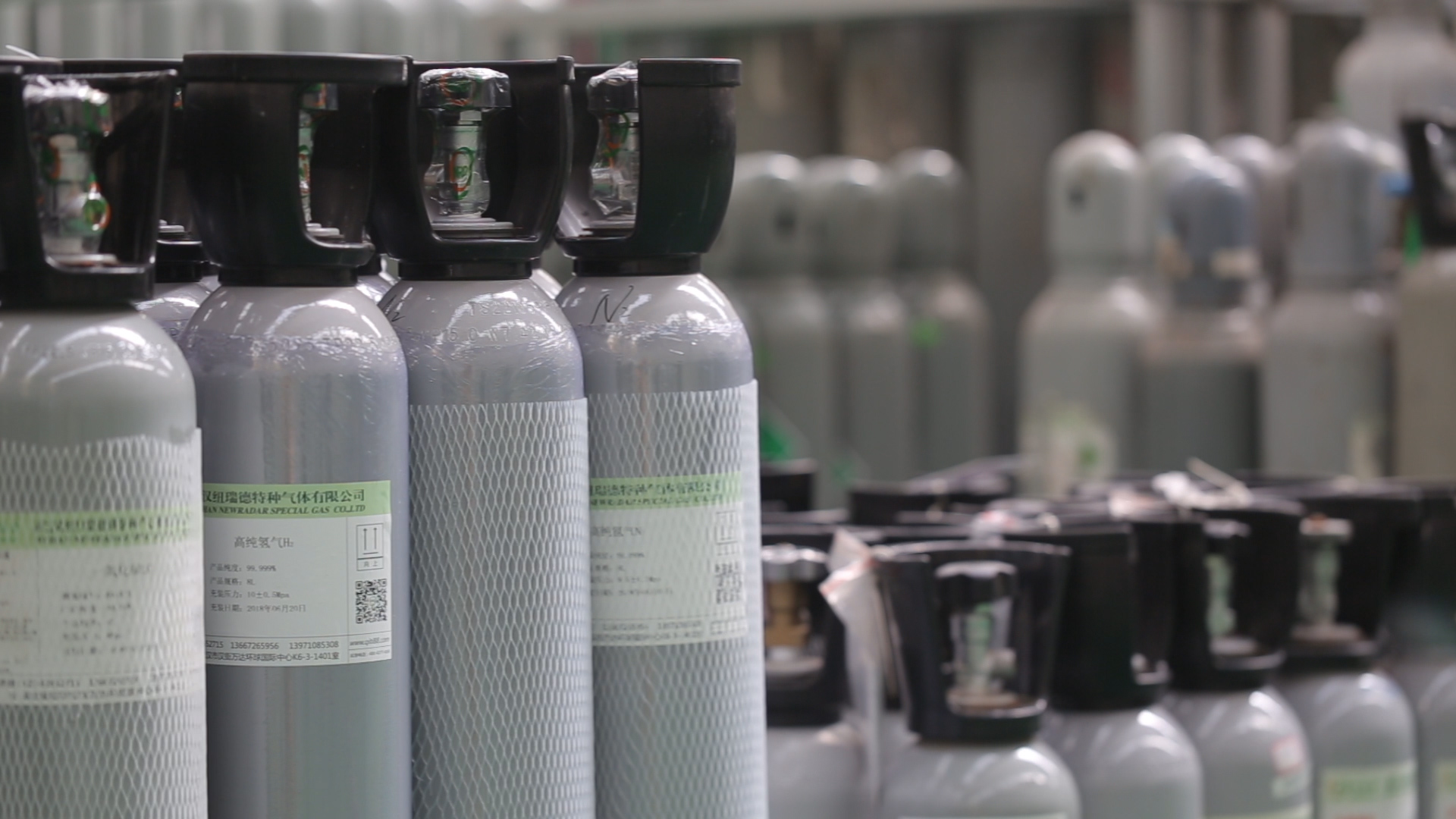Safety management of standard gas distribution (2)
Incompatibility of gas composition and material
Gas incompatible with cylinders, valves and piping materials under certain conditions may cause the following hazards:
1. corrosion
1) moisture corrosion
For example, hydrogenated hydrogen and chlorine gas are easy to corrode cylinders in the presence of water. Water may be introduced from customer use without closing the valve, or during filling or hydraulic testing. Ammonia gas, sulfur dioxide, hydrogen sulfide also have similar corrosion. Even dry hydrogen and chlorine gas cannot be stored in aluminum alloy cylinders at high concentrations.
2) stress corrosion
When carbon monoxide, carbon dioxide and water coexist, it is easy to corrode carbon steel bottle. Therefore, when preparing standard gases containing carbon monoxide and carbon dioxide, cylinders should be dried and feedstock gases should also be high purity or non-moisture gas.
2. Making dangerous compounds
1) Acetylene reacts with copper alloys containing more than 70% copper to form metal-organic compounds.
2) Single halogenated hydrocarbons, such as CH3Cl, C2H5Cl and CH3Br, cannot be contained in aluminum alloy cylinders. They will slowly form metal organic halides with aluminum and explode when they meet water. If the cylinder contains water, alkanes and hydrogen can be detected in the standard gas prepared.
3)Explosive reaction is caused by the incompatibility between gas and valve sealing material or pipeline material. If oxidizing gas can not choose the valve of combustible sealing material. This is often overlooked in standard gas formulations. This includes how to calculate the oxidability of a standard gas.
IV. Review and analysis of incompatible gas accidents in preparation
The following accidents are known to have occurred in recent years: 1996- Taiwan, China, N2O/H2, explosion/casualties; 1997- Canada, CO/ AIR, Explosion; 1997- UK, CH4/ AIR, Explosion/Casualties; 1997-South America, CH4/ AIR, pressure gauge explosion; 1997-US, 4% H2/ AIR, Hazardous Incident; 2003- Germany, N2O/CO, casualties; 2004- France, Halogenated Hydrocarbon/AIR, Potential Accident; 2007- Lanzhou, China, CH4/ AIR, casualties.
In the above accidents, most of them are combustible gases in the air prepared. These gases are mostly used in the detection of environmental gases in chemical plants and coal mines. The cause of the accident or the wrong operation; Or when incompatible gases are simultaneously connected to a system and backflow occurs due to valve leaks; Or the concentration was miscalculated; Or the wrong filling sequence. For the analysis of the explosion accident of carbon monoxide mixture, people always pay attention to the toxicity of carbon monoxide but ignore its flammability. The preparation of combustible gases in the air occurs frequently, so it is very important to have strict operating procedures.





 Facebook
Facebook YouTube
YouTube LinkedIn
LinkedIn Twitter
Twitter